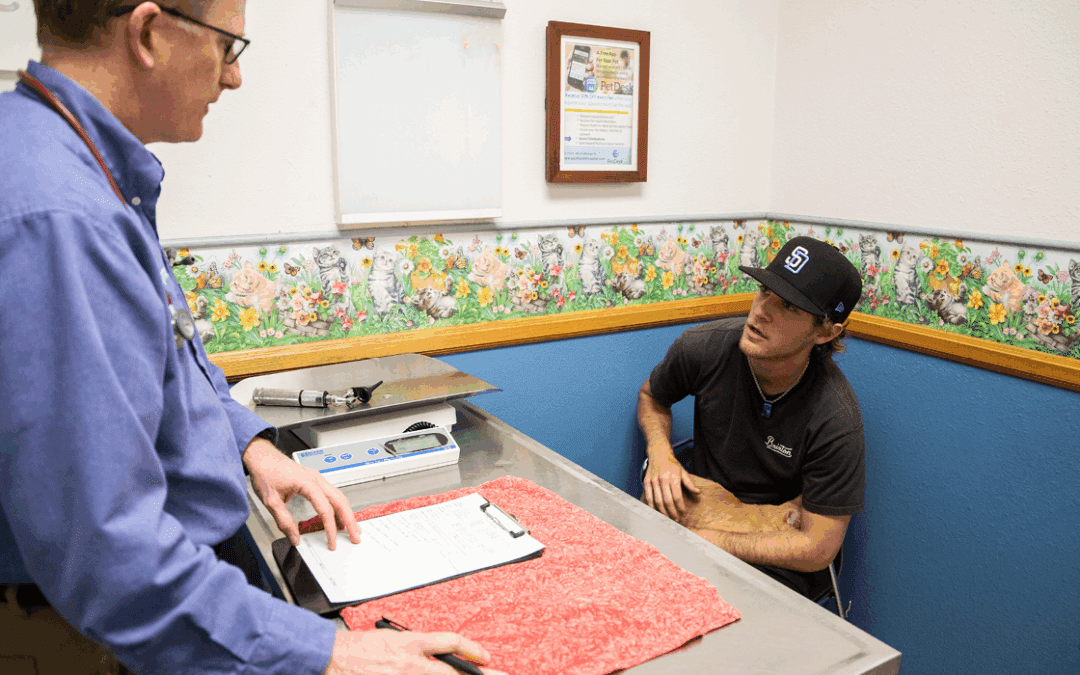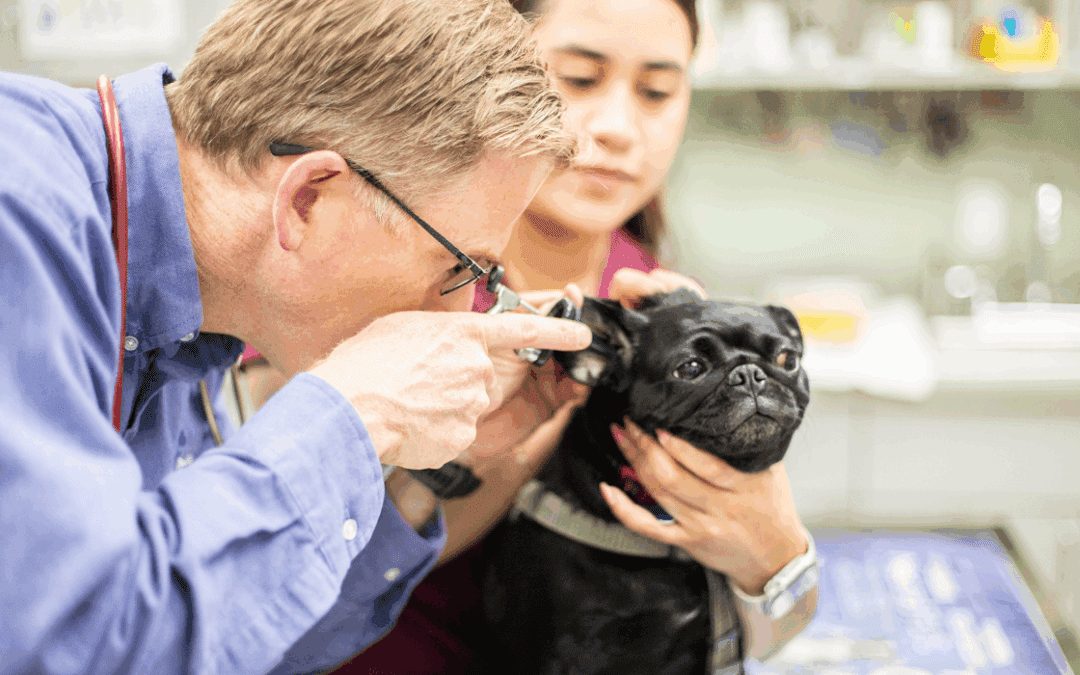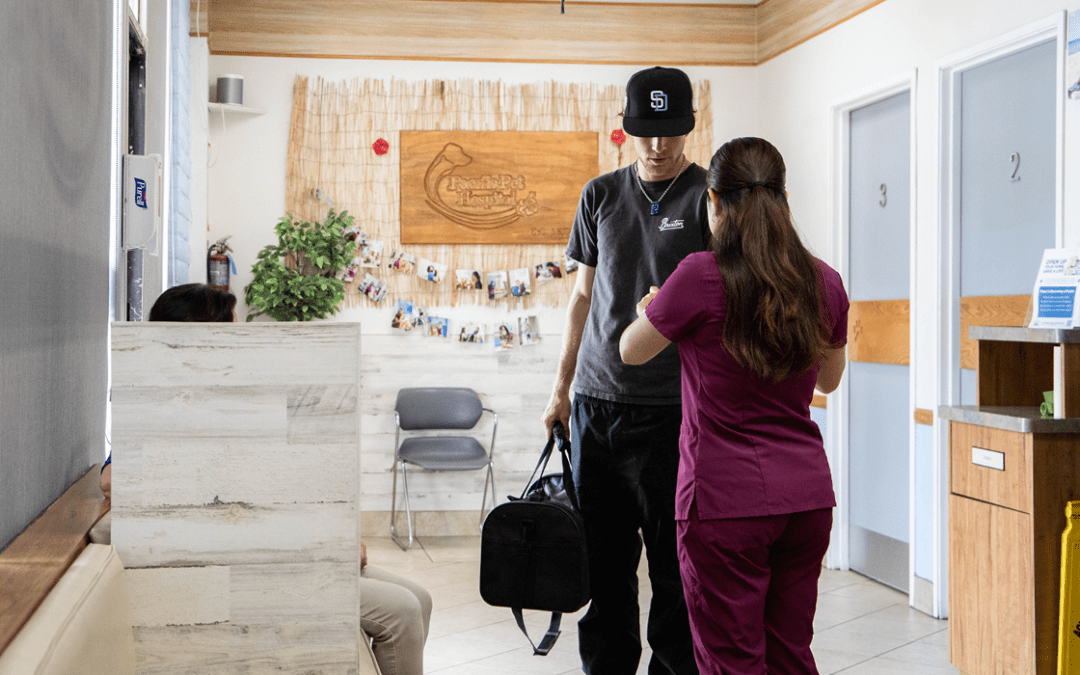You and some loved ones are getting ready to spend a day on the water with your boat. No one is thrilled to discover there’s a hole in the boat, and you left your repair kit back home. Luckily, someone remembered to bring duct tape!
Three months and a half dozen boating trips later, you’ve now got duct tape all around the hole. You’ve minimized leaking, but the water is still coming in, and the tape keeps coming off, so you have to keep using more and more to keep the water at bay.
Your clinic cell phone is like the duct tape. It does solve an immediate problem but, like duct tape, it is not intended as a long-term solution to that problem.
What is the problem you’re solving, and at what cost?
Broadly, veterinary clinics seem to use a “clinic cell phone” to solve three types of problems:
- Medical and patient updates
- Client confirmation and logistics coordination
- Clients with special relationships
At PetDesk, we’ve talked to many practices that use one cell phone for all those problems but how do entire teams share one device? What if someone forgets to bring it back from home or charge it overnight?
Additionally, without an auto-responder, some clients may text after hours and expect a response. Some practices – especially those where it is the doctor’s cell – respond to these after-hours requests, and others do not. Besides the problem of taking work home with you, now your clients may need to wait for a response on a channel where they expect a response in minutes, not hours.
Finally, there are the finances. Adding a phone line to an existing plan or an entirely new number is going to cost. We’ve heard ranges at PetDesk, anywhere between $20 and $60 a month. So once you have a clinic phone, you’re less than $50 away in most cases from upgrading to a centralized system designed with veterinary practices in mind.
Why consider moving to a Texting Platform?
If you have a clinic phone, you’ve already recognized clients who want text messages from your practice. They love the convenience, the access, and not leaving a voicemail or waiting on hold. So why not give your entire staff the same benefit?
Depending on who on your team uses the phone, you probably are only using it for part of its potential. Think of all the outbound routine calls – especially those ending in voicemails that will never be answered – that your front desk would save if they could text their clients. Consider how a tech or doctor could use texting to communicate with clients if it was more accessible to them – for follow-ups or medication refills, for instance?
But even how you’re currently using the phone can be improved! You can save templates for frequent and similar communications (a clinic favorite) to save your staff valuable minutes. Many texting platform companies can text-enable your current phone number so that your clients can have a seamless experience with you when they text the same number that they call to reach your clinic.
How big are the costs of switching?
So clearly there are a lot of benefits to using a texting platform over a clinic cell phone. But you haven’t switched yet, and I bet that is for one of two reasons:
First, there is a cost. Of course there is! The question isn’t about adding cost, it’s about value. If your tool costs you $20 a day, yet it saves you 3 hours of CSR time and you pay them $20 an hour, or $60 total, you just saved yourself some money (and time).
If you consider the cost of your clinic phone, you’re talking about adding a new channel to all of your staff members, with additional functionality, for several dozen dollars at most.
Now, compare that cost with the benefit. Calculate how long you’d have to save in staff time doing routine communication tactics, and compare the hourly rate at your clinic to the additional money you’ll be spending. At PetDesk, we see time savings of 10-12 hours a week when customers use our Two-Way Messaging tool.
Second, implementation of software at veterinary practices can be tough. Getting the software set up, training the staff, and weaving the new communication channel into appropriate places – all of this takes work. If you’re an experienced practice manager at a well-oiled clinic, this may be less of an issue, but the texting platform can help. That’s why you should partner with a company that can provide you with fast technical implementation, customized training, and access to ongoing support. If you don’t have a place like a veterinary Facebook group to ask about vendors’ service and support, read reviews on sites like Capterra.
See the power of PetDesk for yourself—for free
Save time and grow your business with custom websites and digital marketing, 24/7 error-free booking, a PIMS-VoIP phone system, plus a client engagement platform with a mobile app.






